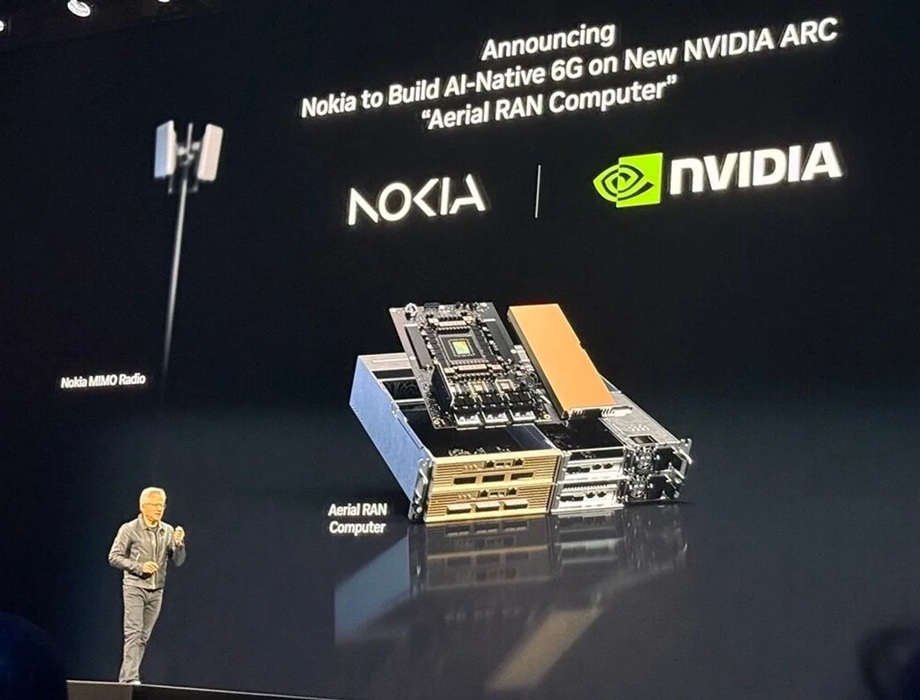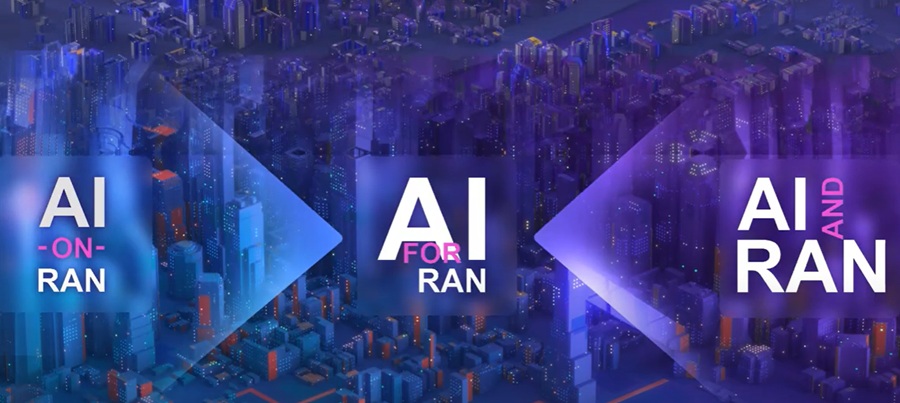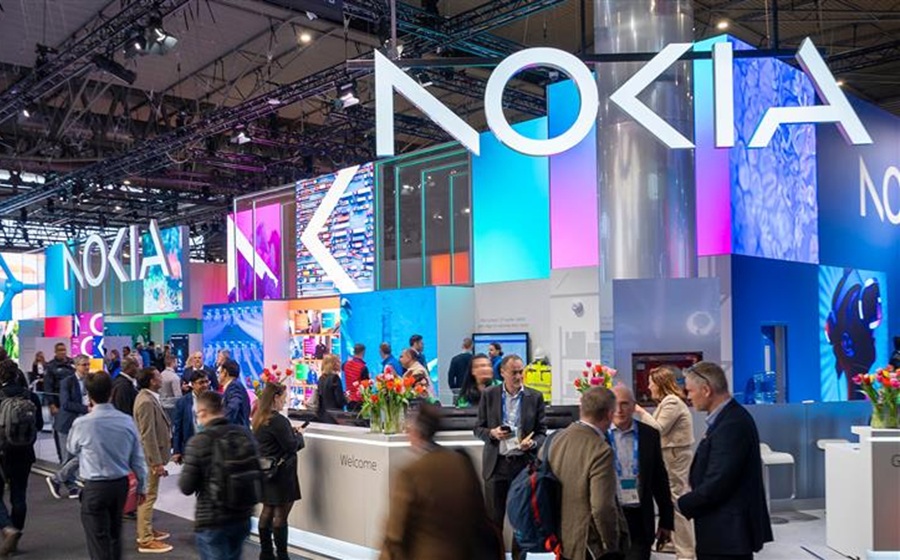World’s leading chipmaker Nvidia is making $1 billion equity investment in Finnish telecom giant Nokia to accelerate the development of AI-native 6G networks. Under the partnership, Nokia will issue about 166 million shares to Nvidia at $6.01 each as part of the deal, giving Nvidia a 2.9% stake, the companies said in a statement.
The strategic partnership aims to embed GPU-powered intelligence directly into mobile infrastructure, creating a new category of network called AI-RAN (Radio Access Network).
This collaboration, which immediately sent Nokia’s stock soaring, is a foundational step toward capturing the $200 billion projected market for AI-powered networking at the edge and establishing a new global standard for connectivity.
Key Highlights of Nokia-Nvidia Partnership
- $1 Billion Investment: Nvidia is acquiring a 2.9% equity stake in Nokia, subscribing to 166.4 million new shares at $6.01 per share.
- AI-RAN Product Launch: Nokia will embed the new Nvidia Aerial RAN Computer Pro (ARC-Pro), a 6G-ready accelerated computing platform, into its RAN portfolio.
- Key Carrier Collaboration: T-Mobile U.S. is partnering with both companies to drive and test the new AI-RAN technologies, with field trials expected to begin in 2026 as part of its 6G innovation process.
- ARC-Pro Platform: This new platform unifies connectivity, computing, and sensing capabilities, allowing service providers to move from 5G-Advanced to 6G primarily through software upgrades.
- Data Center Focus: The partnership extends to AI networking solutions, including applying Nokia’s SR Linux software to the Nvidia Spectrum-X Ethernet platform and exploring the use of Nokia’s optical technologies in future Nvidia AI infrastructure.

What is AI-RAN?
AI-RAN, or Artificial Intelligence Radio Access Network, integrates AI computing with the cellular radio systems that connect smartphones, IoT devices, and industrial sensors to carrier networks. Instead of operating radios and compute units separately, AI-RAN unifies them on a shared, software-defined platform.
AI-RAN is designed to merge advanced AI capabilities with cellular networks, meeting the rising demand from data-heavy and generative AI applications. Built on flexible, software-defined infrastructure instead of fixed hardware, it allows telecom operators to process AI workloads at the edge, improve radio efficiency, and optimize network performance while opening new revenue opportunities through AI-driven services.
Nvidia’s Aerial RAN Computer Pro (ARC-Pro) is the technical backbone of that approach. It combines AI processing, connectivity, and sensing in a single system, allowing telecom operators to upgrade from 5G-Advanced to 6G largely through software rather than hardware replacement.
Nokia plans to embed ARC-Pro within its AirScale baseband and any RAN architectures, creating a modular setup that supports both cloud-based and purpose-built radio networks. The aim is to make future wireless infrastructure as flexible and programmable as the modern data center.
Redefining Radio Access Network with AI
The core of this strategic tie-up involves a fundamental redesign of the network itself. Nvidia founder and CEO Jensen Huang described the significance of this shift in broad, national terms. “Telecommunications is a critical national infrastructure – the digital nervous system of our economy and security,” he stated.
“Built on Nvidia CUDA and AI, AI-RAN will revolutionize telecommunications — a generational platform shift that empowers the United States to regain global leadership in this vital infrastructure technology. Together with Nokia and America’s telecom ecosystem, we’re igniting this revolution, equipping operators to build intelligent, adaptive networks that will define the next generation of global connectivity.”
This vision of a network that also functions as a powerful, distributed AI grid is exactly what the industry needs to manage the massive surge in mobile AI traffic. Consider that nearly half of all ChatGPT’s 800 million weekly active users access the platform via mobile devices. This trend is only expected to accelerate with the rise of “agentic” and “physical” AI applications.
From 5G to 6G: Redesigning the Network
Nokia’s newly appointed CEO Justin Hotard, who joined the company earlier this year from Intel’s data-center division, described the partnership as a fundamental rethink of network design. “The next leap in telecom isn’t just from 5G to 6G – it’s a fundamental redesign of the network to deliver AI-powered connectivity, capable of processing intelligence from the data center all the way to the edge,” he said. “Our partnership with Nvidia, and their investment in Nokia, will accelerate AI-RAN innovation to put an AI data center into everyone’s pocket.”
The companies said the first AI-RAN deployments will take place with T-Mobile U.S., which plans to begin field trials in 2026. “Our collaboration with industry leaders Nokia and Nvidia marks an important step toward shaping the future of connectivity as we develop the innovations that will power the 6G era,” said John Saw, T-Mobile’s president of technology and CTO.

Who benefits from the partnership?
For Nokia, the alliance brings much-needed momentum as it pivots from traditional telecom gear toward AI-enabled network solutions. Investors welcomed the move, sending Nokia’s shares up more than 20%, their highest level in nearly a decade. The partnership also reinforces Hotard’s strategy of expanding Nokia’s role in cloud and data-center networking.
For Nvidia, the upside could be even greater. By embedding its GPU and software stack inside wireless infrastructure, it positions itself as the compute standard not just for AI training and inference, but also for the global communications grid. By working with a major vendor like Nokia, NVIDIA gains access to the massive, projected $200+ billion RAN market and positions its software and chips at the ultimate edge of connectivity – the cell tower.
Meanwhile, telecom operators, like T-Mobile U.S., may gain from networks that are more energy-efficient and easier to upgrade through software.
John Saw, president of technology and chief technology officer at T-Mobile, underscored this real-world application. “Our collaboration with industry leaders Nokia and NVIDIA marks an important step toward shaping the future of connectivity as we develop the innovations that will power the 6G era,” Saw noted. “Beginning in 2026, T-Mobile will conduct field evaluations and testing of advanced AI-RAN technologies to ensure they meet the evolving needs of our customers as we move toward 6G.”
Finally, end-users and enterprises running applications like generative AI, agentic AI, and future 6G services (integrated sensing, AR/VR glasses, drones) will experience massive improvements. The proximity of AI processing ensures lower latency and superior performance for demanding, next-generation mobile applications.
Michael Dell, chairman and chief executive officer of Dell Technologies, summarized this edge opportunity perfectly. “The telecommunications industry owns the most valuable real estate for AI — the edge, where data is created,” Dell said. “This AI-RAN collaboration with Nokia and NVIDIA makes that potential real… The operators who modernize their infrastructure today won’t just carry AI traffic — they’ll be the distributed AI grid factories that process it at the source, where latency matters and data sovereignty is critical.”









